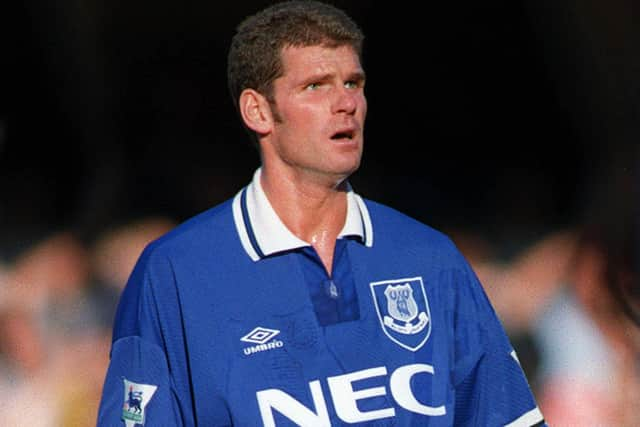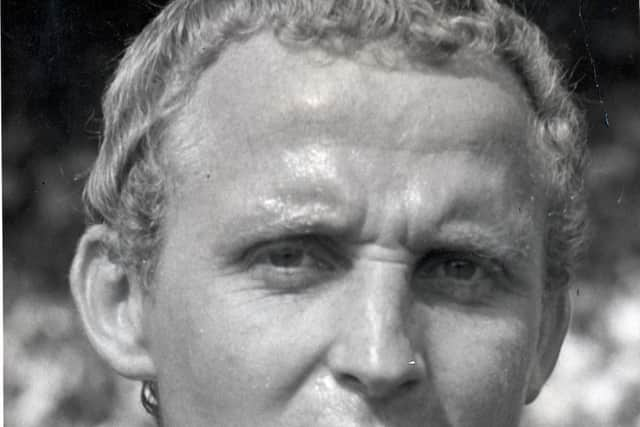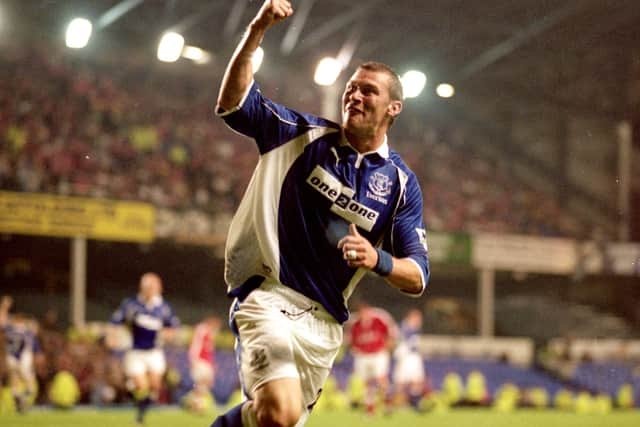Nathan Patterson: Everton's Scottish connections live on after Ian Durrant's misspelt name, the Hearts signing 'jailed for murder' and the title-winning skipper who ended up running a pub in Dundee


However, it was still not as startling as Duncan Ferguson turning up for his unveiling after joining the Goodison Park club initially on loan from Rangers in a scarlet-coloured suit jacket.
The striker’s choice of attire prompted much chatter amongst the press pack present that day. “Like turning up in a green suit to sign for Rangers,” one muttered.
Advertisement
Hide AdAdvertisement
Hide AdAnd at least Everton have spelt Patterson’s name with two Ts in the footage released on Tuesday after his transfer from Rangers was confirmed. When Ian Durrant joined on loan from Ibrox along with Ferguson in October 1994, he was given two early indications that this was not the move he required as he sought to reignite his Ibrox career. Then manager Mike Walker’s first words to someone already capped several times by Scotland were: “So, where do you play, son?” Then, before a game against Crystal Palace, he noticed his name was misspelt as “Durant” on the back of his shirt.


“We had this lovely white strip,” Durrant told me when I was researching a book about Ferguson. “‘This is the new strip son, it is lovely,’ the kit man said to me. I looked at it: ‘You missed an r’. He replied: ‘Oh f**k, listen don’t say anything. You keep that one.’”
Durrant played five games in the month he was there on loan. Ferguson signed permanently, "becoming the legend before the player" in the words of new manager Joe Royle after he scored a towering header in a memorable 2-0 win over Liverpool.
Durrant was informed by Walker that his loan deal wasn't being extended while they were in a disco, which summed up the state of the relegation-threatened club at the time.
Disorientating though the number on his back might be, Patterson is another in a long line of Scots at Everton. There is even one on the club's board now following Graeme Sharp’s appointment as a non-executive director. The striker, signed from Dumbarton in April 1980, won two league titles among other honours at Goodison and was more recently club ambassador.


Like Durrant and Ferguson, who ended up enjoying two spells at the club, and is now assistant coach, Patterson has joined a struggling side. There is hope his recruitment can contribute to a rebirth. Scots have tended to underpin Everton successes dating all the way back to Victorian times.
As James Corbett notes in The Everton Encyclopedia, published in 2012, Scotland was always one of the most potent talent sources for the club. “Few clubs have benefitted more from this southern emigration of players than Everton, and a tradition of Scots turning out in the blue of the club extends back to the very first few years of its existence," he writes.
In Tony Onslow’s The Scottish Footballers of Everton the author notes that the 1891 census revealed that there were 15,276 people living in Liverpool who had been born in Scotland and they made up nearly three per cent of the population. Everton were formed in 1878 and were already relying on a healthy of number of players from north of the Border. Famously, Liverpool, formed in 1892, became known as "the team of Macs" due to their heavy Scottish influence.
Advertisement
Hide AdAdvertisement
Hide AdEven by then a Scot had already skippered Everton to a league championship title, won while they were playing at Anfield, the club's first ground, and wearing salmon pink coloured shirts.


Dunbartonshire-born Andrew Hannah was captain for this hugely significant achievement in 1891. Other Scots joined him in the team, including Alec Brady and winger Alex Latta.
This continued to be a trend and a Scot, Fifer Jock Thomson, was skipper in 1932 as Everton won the fourth English league title in their history two years after suffering their first-ever relegation.
Thomson led them back up and then to the English title in their first season back in the top flight. He was also part of the side that won the FA Cup in 1933. Although he subsequently lost his place in the side, Thomson, by then a veteran, had been re-appointed skipper by the time Everton secured the 1939 league title. He went onto manage Manchester City but decided to leave the post after being successful “with his application to run a bar in Dundee”, as one newspaper reported in March 1950.
Thomson deserves a place in any conversation about greatest-ever Scottish players at Goodison, as do the likes of Andy Gray, Alex Scott and Alex Parker. However, one would broker no argument in the Gwladys Street End if proposing Alex Young as the finest of all. The player who joined Young in moving from Hearts in November 1960 also deserves a mention, as much because of the intrigue that surrounds him as anything else.
Like Patterson, George Thomson was a full-back. He deserves his place in an article about distinguished Scots at Everton having played 19 times in another league championship success in 1963. But his post-career days are shrouded in some mystery, with Young even claiming in his autobiography that his former teammate ended up in Preston jail after committing a murder.
As far as can be established he retired when just 31 in March 1968 while at Brentford after being suspended by the club for missing training. Young remembered him as a “suave rascal”.
Patterson will be doing well if he merits having a lounge named after him at the club's new stadium at Bramley-Moore dock, where Everton hope to move in time for the start of the 2024-25 season. The Alex Young Lounge at Goodison reflects the status the silky forward has at Everton, where he was known as the Golden Vision.
Advertisement
Hide AdAdvertisement
Hide AdHe is “part of the fabric of this club, part of who we are,” Everton chairman Bill Kenwright wrote in a tribute read out at Young’s funeral in Edinburgh five years ago. Although not all to the same extent as Young, the same could be said about a multitude of Evertonian Scots in whose tread Patterson now follows.
Get a year of unlimited access to all The Scotsman's sport coverage without the need for a full subscription. Expert analysis of the biggest games, exclusive interviews, live blogs, transfer news and 70 per cent fewer ads on Scotsman.com - all for less than £1 a week. Subscribe to us today
Comments
Want to join the conversation? Please or to comment on this article.